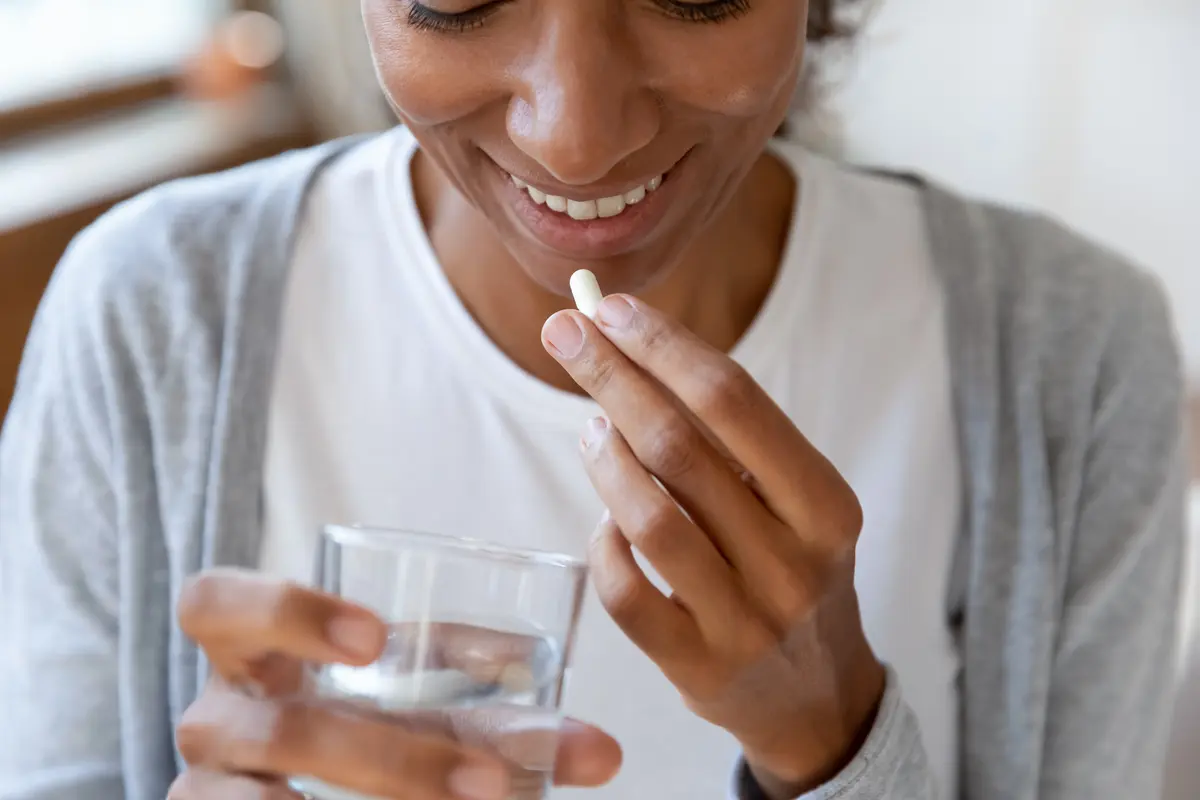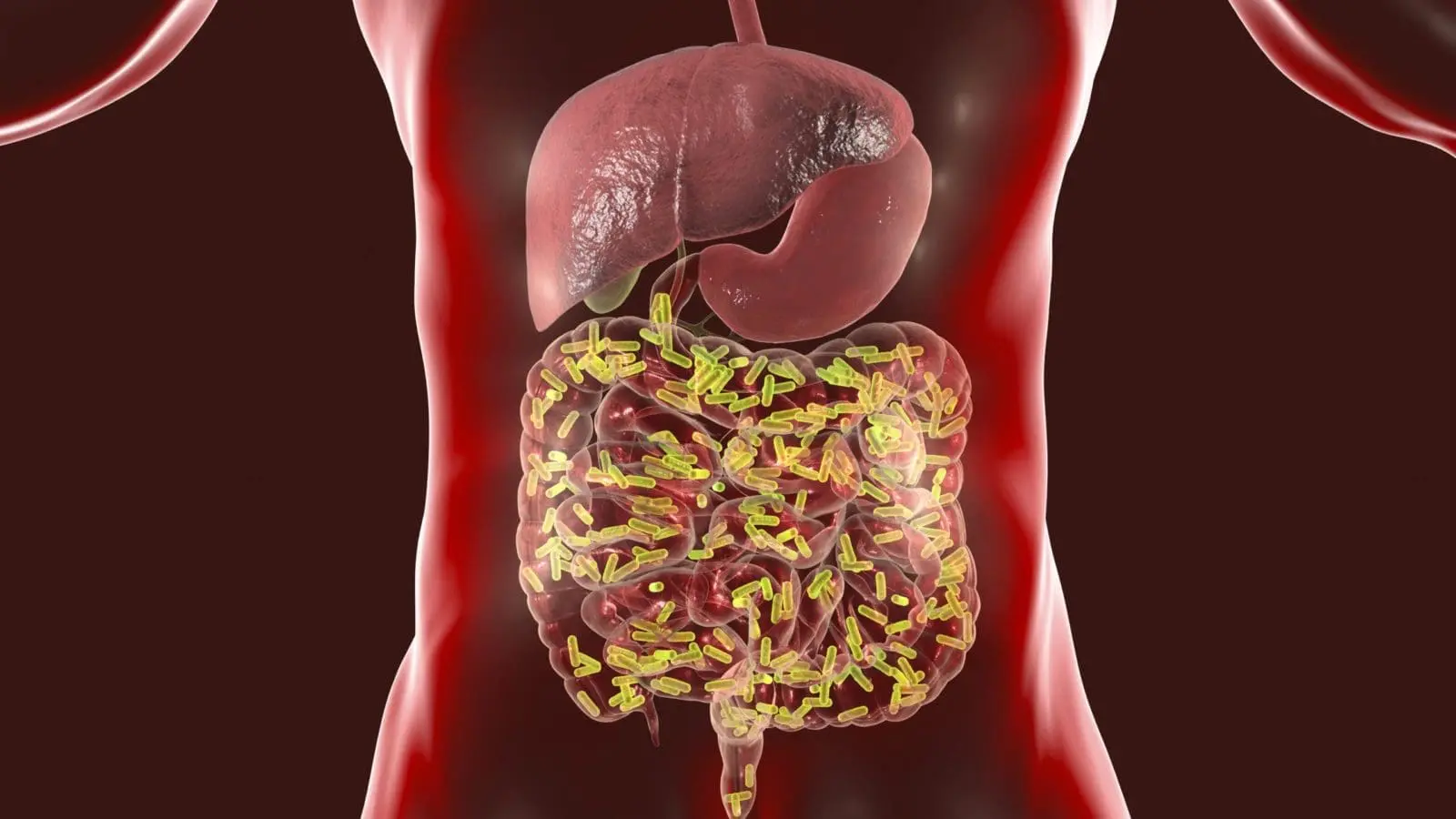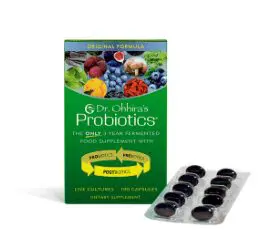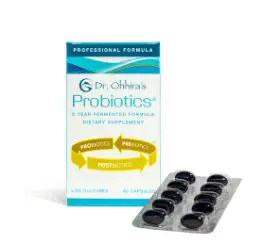Original Post Date: Apr 25, 2017
Let’s Talk Gut Health: For a long time, the primary function of the gastrointestinal tract was believed to be digestion–digestive enzymes break down food, which makes nutrients available for absorption. Digestion is certainly important. However, when discussing gut health, we must also consider the enormous amount of activity that occurs in the colon, which is regulated by the following two factors: probiotic bacteria, and our diets—the food we provide them.
Bacteria Rule: Scientists estimate the bacteria began evolving on Earth over 3 billion years ago. By comparison, humans (homo sapiens) first evolved in Africa about 300,000 years ago. Hence, bacteria have been thriving on earth for millions of years longer than humans. In addition to existing in the air, water, and soil, bacteria also played a critical role in the evolution animals. As animals began to evolve, bacteria developed symbiotic relationships where both the bacteria and the animal benefited.
In the past several decades, rapid advances in genomic sequencing technology have enabled scientists to gain a deeper understanding of the structure and function of the gut microbiome in animals and humans. These advances have revealed a bacterial world of astonishing pervasiveness and diversity, which has fundamentally changed our understanding of animal biology, and the nature of life on Earth. Human life is dependent on bacteria. The term probiotic is derived from “pro” meaning “for” and “bios” meaning “life”. Hence, the term probiotic means “for life” or “promoting life.”
Scientists estimate there are over 5 million species of insects, 11,000 species of birds, 12,000 species of reptiles and around 6,000 species of mammals (including humans). Beneficial bacteria, or probiotics, inhabit the gut microbiome of virtually all (over 99.9%) of these animal species. The life of all animals, including humans, depends on bacteria.
Postbiotic Metabolites: Another major advancement in microbiome science and our understanding of gut health was due to the discovery that probiotic bacteria residing in the colon produce compounds referred to as postbiotic metabolites. I reviewed and summarized this new field of scientific knowledge in my 2019 paper titled Postbiotic Metabolites: The New Frontier in Microbiome Science.¹
A major realization that has emerged from this new field of science is the fact that the primary “job” of probiotic bacteria is to convert components in the food you eat into postbiotic metabolites, which have a wide range of health-regulating effects. Hence, most of the health benefits generally attributed to probiotics are now known to occur from the postbiotic metabolites they create.²
The gut microbiome is estimated to contain about, 100 trillion bacteria, and new methods for determining the bacterial composition of the human gut has revealed that the gut microbiome contains more than 3000 species of bacteria.³ Thus, a healthy individual has a virtual army of probiotic bacteria producing postbiotic metabolites that protect us against pathogens, regulate our immune system, the digesting and the absorption of nutrients, and even influence our moods and behavior. However, like a human army, your army of probiotic bacteria must be fed well for them to do their job, which is to produce postbiotic metabolites. Unfortunately, many people don’t feed their probiotic bacteria a healthy diet.
Many people suffer from bacterial imbalance, or dysbiosis, which hinders or limits the ability of their probiotic bacteria to produce postbiotic metabolites. Many things contribute to bacterial imbalance such as diets high in processed foods, antibiotics, environmental toxins, etc.
The health benefits and importance of postbiotic metabolites cannot be overstated. The author of a paper published in the Journal of Immunology stated the following, “It is now clear that the depletion of microbial metabolites beneficial to host health is associated with a rapid rise in non-communicable chronic diseases.⁴
The Importance of Diversity: In complex ecosystems, like the Amazon rainforest and the gut microbiome, greater diversity increases the strength, stability and resilience of the ecosystem. High bacterial diversity is essential for gut health, which means creating and maintaining a microbiome with many different strains of bacteria.
The diet of most people does not support a healthy gut microbiome. The ‘food’ that probiotic bacteria require are dietary fibers and polyphenols. The best sources of these compounds are fruits and vegetables. However, results from multiple studies report that roughly 80-95% of American children and adults do not consume adequate amounts of fruits and vegetables. If you consume a diet with a diverse range of fruits and vegetables, your probiotic bacteria will be able to produce a vast array of postbiotic metabolites, which have many critical health-regulating functions in humans.
This means that most people have some level of bacterial imbalance and gut inflammation, which damages the intestinal barrier and contributes to a wide range of health problems.
Over two centuries ago, Hippocrates, who is referred to as the Father of Medicine, is credited with saying, “All disease begins in the gut.” Now we have proof that Hippocrates was right. Studies report that virtually chronic, age-related degenerative diseases are associated with gut dysbiosis.⁵
A Common Mistake: Many people believe taking a high-dose, multi-strain probiotic supplements will correct bacterial imbalances and gut dysbiosis. This is an unfortunate misunderstanding. I wrote a short article titled The Oral Probiotic Dilemma, which explains why orally ingested probiotics are generally not effective. One of the reasons is stomach acid, which is over 10,000 times stronger acid than the acidity in the intestines and colon. Stomach acid kills most orally ingested probiotics. Studies have shown that when bacteria are exposed to acid equivalent to stomach acid, the bacteria do not survive.⁶ The Probiotic Dilemma is available at: www.naturalpharmacist.net/dilemma.
The Microbiome Diet: For several hundred thousand years, ancestral humans evolved as hunter-gathers. Their diet consisted primarily of fish, lean meats, and a diversity of fruits, vegetables, nuts, and seeds. Processed foods, grains and dairy only started to become available about 12,000 years ago, with the emergence of agriculture. Scientists estimate that our ancestors ingested 100-150 grams of fiber daily. Compare this to the average daily fiber intake of Americans, which is only about 17 grams per day.⁷
In addition to not consuming an adequate quantityof dietary fiber, Americans don’t consume an adequate diversity of fiber-rich fruits and vegetables. To put this in perspective, I regularly ask people, “Have you eaten 10 or 12 different fruits and vegetables today?” Unfortunately, most people are seriously deficient in their consumption of organically grown, plant-based foods, which are the foods that support a healthy gut microbiome.
A recent study analyzed over 50,000 foods that are commonly available in U.S. grocery stores. The results of this study are shocking. The report revealed that approximately 70% of America’s food supply consists of ultra-processed foods⁸. Consuming foods like this contribute to dysbiosis, gut inflammation and a wide range of health problems.
The Dr. Ohhira’s Advantage: It is obvious that most people don’t provide their probiotic bacteria with a diverse assortment of plant-based foods. However, the 13 strains of bacteria used in the manufacture of Dr. Ohhira’s Probiotics are supplied with various kinds of Japanese fruits, vegetables, mushrooms and seaweeds. The bacteria then digest these foods in a 3-year fermentation process that results in the production of over 500 postbiotic metabolites. Directly ingesting the postbiotic metabolites in Dr. Ohhira’s Probiotics is a quick and effective way to help correct imbalances in the gut microbiome ecosystem.
The Dr. Ohhira’s Reset Challenge: The recommended dose for Dr. Ohhira’s Probiotics is two capsules daily. For people who have not previously taken Dr. Ohhira’s Probiotics, we suggest they try the Dr. Ohhira’s Reset Challenge. This involves purchasing a 30-count box of Dr. Ohhira’s Probiotics and taking two capsules twice daily for one week. Many people report experiencing improvements in their digestion and elimination along with a decrease in fatigue. In clinical trials with trained athletes, participants gain substantial increases in energy, stamina, strength, and endurance.
Improve your gut, improve your health and improve your life with Dr. Ohhira’s Probiotics. This is the Dr. Ohhira’s Advantage.
Sources:
1 Pelton R. Postbiotic Metabolites: The New Frontier in Microbiome Science. Townsend Letter. June 1, 2019
2 Scott E, et al. Postbiotics and Their Health Modulatory Biomolecules. Biomolecules. 2022 Nov;12(11):1640.
3 Rosenberg E. Diversity of bacteria within the human gut and its contribution to the functional unity of holobionts. Npj biofilms and microbiomes. 23 Nov 2024. 10;134.
4 Nagler C. Modern World Influences on the Microbiome and Their Consequences for Immune-Mediated Disease. Journal of Immunology. 2021 Oct 1;207(7):1695-1696.
5 Martel J, et al. Gut barrier disruption and chronic disease. Trends in Endocrinology & Metabolism. April 2022;33(4):247-265.
6 Caillard R and Lapointe N. In vitro gastric survival of commercially available probiotic strains and oral dosage forms. Int J Pharmaceutics. March 17,2017;519(1-2): 1-418.
7 US Department of Agriculture; Agricultural Research Service. What We Eat in America: Nutrient intakes from food by gender and age. National Health and Nutrition Examination Survey (NHANES) 2009-10. http://www.ars.usda.gov/Sp2userfiles/Place/12355000/Pdf/0910/Table_1_Nin_Gen_09.Pdf
8 Ravandi B, et al. Prevalence of processed foods in major US grocery stores. Nature Food. 13 Jan, 2025;6:296-308.





